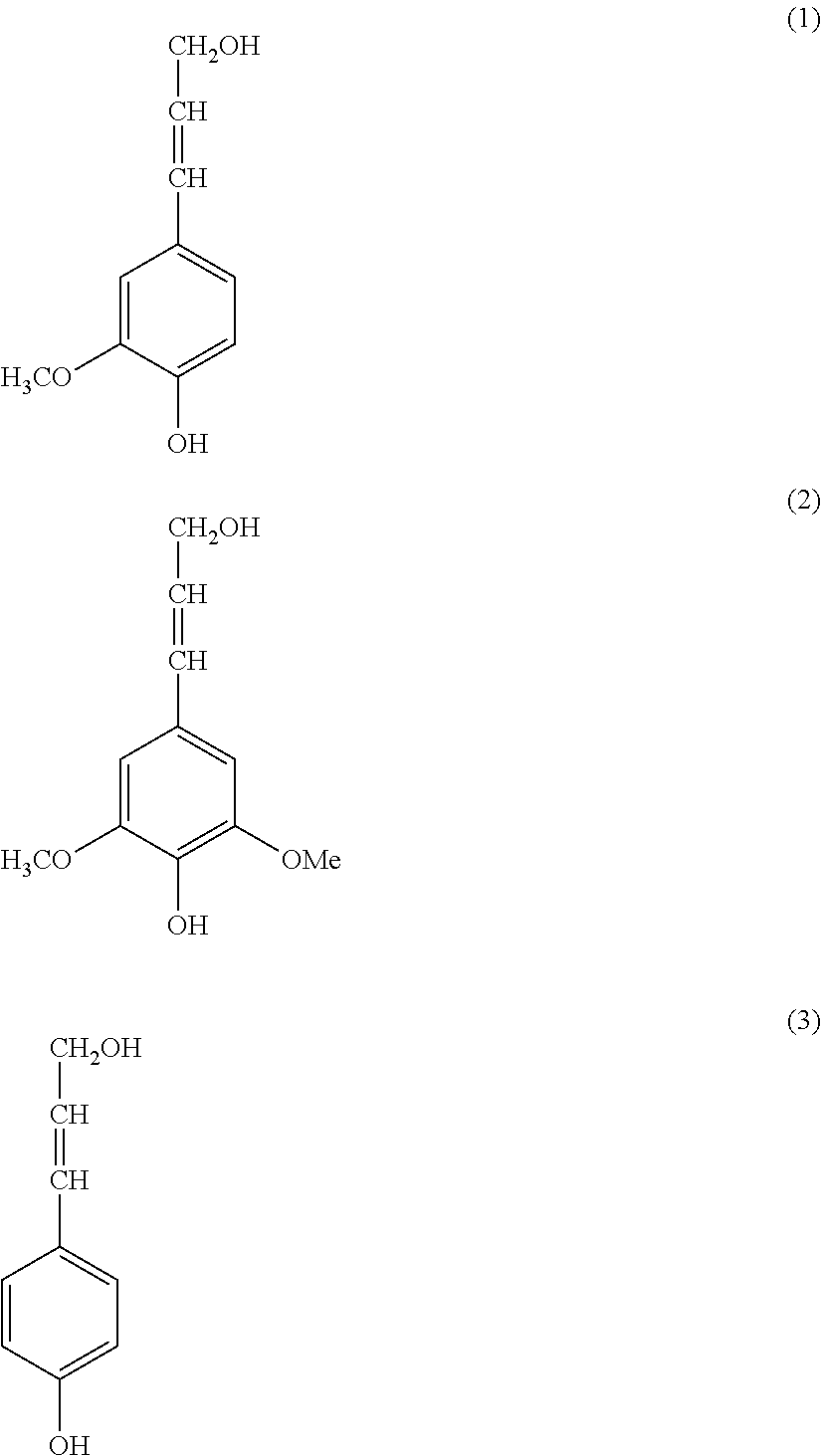Lignin derivative, lignin resin composition, rubber composition, and molding material
a technology of lignin resin and derivative, which is applied in the field of lignin derivative, lignin resin composition, rubber composition, and molding material, can solve the problems of reduced rigidity or mechanical strength of rubber composition, large quantities of phenols, and increased production costs, and achieve elastic modulus, or tensile properties, and excellent low hysteresis loss characteristics
- Summary
- Abstract
- Description
- Claims
- Application Information
AI Technical Summary
Benefits of technology
Problems solved by technology
Method used
Image
Examples
example 1a
[0245](1) Lignin Derivative
[0246]300 g (absolute dry weight) of cedar chips and 1,600 g of pure water were introduced into a rotary autoclave having a capacity of 2.4 L. Then, while the content was stirred at a speed of rotation of 300 rpm, the content was treated at a treatment temperature of 300° C. and a treatment pressure of 9 MPa for 60 minutes, and thus the cedar chips were decomposed.
[0247]Next, the decomposition product was filtered and washed with pure water, and thereby a water-insoluble portion was separated. This water-insoluble portion was immersed in acetone and then filtered, and an acetone-soluble portion was collected.
[0248]Next, acetone was distilled off from the acetone-soluble portion, and lignin derivatives were obtained.
[0249](2) Production of Rubber Composition
[0250]Next, 50 parts by mass of the lignin derivatives and 50 parts by mass of a cashew-modified phenolic resin were melted and mixed in advance on a hot plate at 130° C., and the mixture was pulverized....
example 2a
[0252]A rubber composition was obtained in the same manner as in Example 1A, except that the amount of the lignin derivatives was changed to 100 parts by mass, and a phenolic resin-based substance was not added thereto.
example 3a
[0253]A rubber composition was obtained in the same manner as in Example 1A, except that 50 parts by mass of a tall-modified phenolic resin was added instead of the cashew-modified phenol.
PUM
| Property | Measurement | Unit |
|---|---|---|
| softening temperature | aaaaa | aaaaa |
| softening point | aaaaa | aaaaa |
| mass | aaaaa | aaaaa |
Abstract
Description
Claims
Application Information
 Login to View More
Login to View More - R&D
- Intellectual Property
- Life Sciences
- Materials
- Tech Scout
- Unparalleled Data Quality
- Higher Quality Content
- 60% Fewer Hallucinations
Browse by: Latest US Patents, China's latest patents, Technical Efficacy Thesaurus, Application Domain, Technology Topic, Popular Technical Reports.
© 2025 PatSnap. All rights reserved.Legal|Privacy policy|Modern Slavery Act Transparency Statement|Sitemap|About US| Contact US: help@patsnap.com



